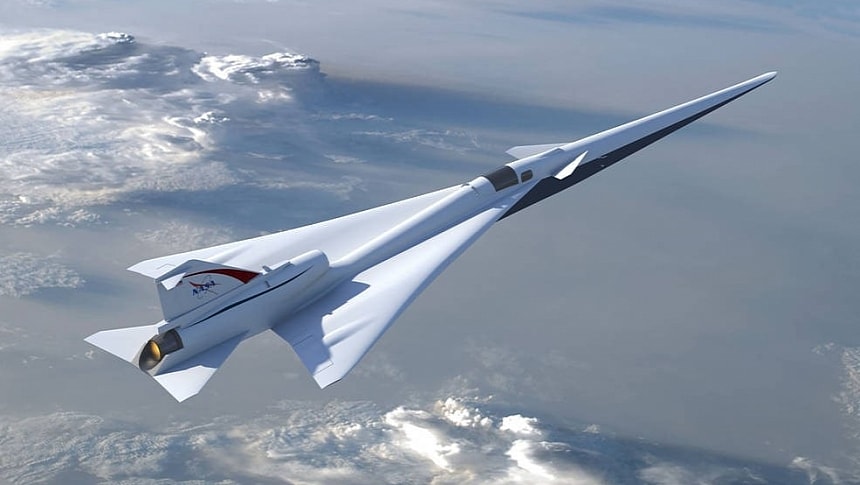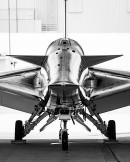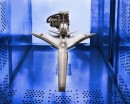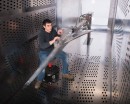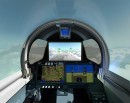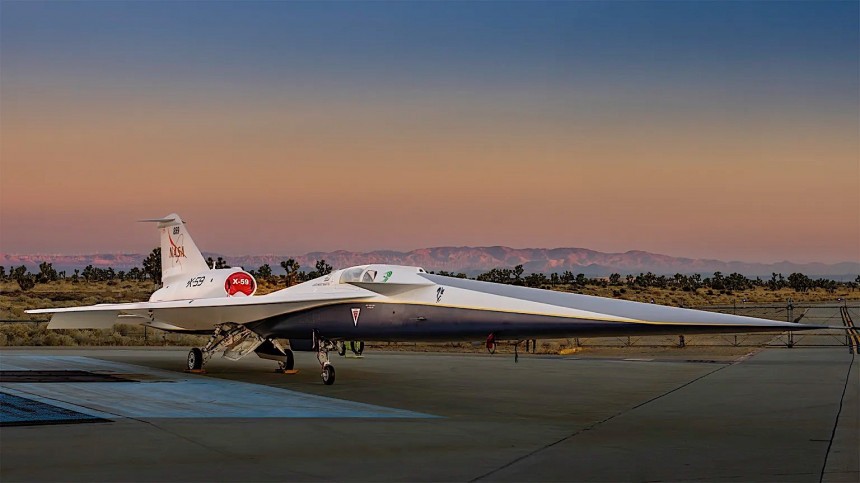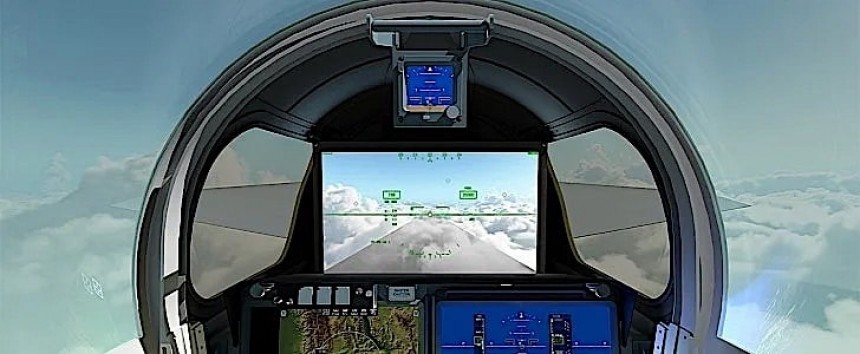There are several key moments in the history of aviation, each of them adding another brick to the incredible monument that is human ingenuity. Moments without which, let's face it, the world we know today would not have existed.
It's commonplace these days for people to go on transatlantic trips by means of aircraft, but that would probably not have been so if it weren't for a certain Charles Lindbergh and a flying contraption put together by a crew called Ryan Airlines back in the 1920s.
The plane was called the Spirit of St. Louis and it was the best aviation could offer in its infancy – a single-engine, single-seat monoplane with the wings installed above the main fuselage. Not a fancy build, by any measure, but more than enough to secure Lindbergh's place in the history books as the first human to fly solo across the Atlantic Ocean, departing from Long Island and landing in Paris.
The flight is well-known to anyone with the slightest interest in aviation, but what you may not know is that the Spirit of St. Louis had no forward-facing windows. A quirk that had to do with Lindbergh's request to have the plane's main fuel tanks installed in the forward section of the machine in a bid to improve the center of gravity.
What that means is all the pilot saw ahead of him during the 33 hours and 30 minutes of flight was the plane's instrument panel. He did have two side windows, one to the left and one to the right, which he could use to get his bearings.
Flying with no forward visibility was not that uncommon back in the day, especially for pilots like Lindbergh, who used to fly from the rear seat with mailbags sitting in front of him. All the man had to do to see ahead was yaw the plane and look out the side window.
That maneuver was perfectly suited for an aircraft that did not exceed a maximum speed of 133 mph (214 kph), but not something one could easily do in a contraption flying at Mach 1.4 (925 mph/1,488 kph). Yet NASA is getting ready to fly America's first plane with no forward-facing windows since the Spirit of St. Louis at exactly that speed. And it'll do it by relying solely on technology this time.
If you've been watching what's going on in the aviation industry these past few years then you know what the Quiet Supersonic Technology (QueSST) is. If not, here's the gist: NASA is looking to bring back civilian supersonic flight, expanding it over land, where it currently isn't permitted, by taking advantage of new ways of designing aircraft.
The tool NASA will use to demo its ideas is called X-59 and it has been developed together with Lockheed Martin. We've talked about it time and again, so we're not going to go into its specifics now. We will, however, have a look at the tech suite that will allow its pilot to see outside even if the plane, because of its shape, has no forward-facing windows.
NASA calls this collection of hardware an eXternal Vision System (XVS). It is basically a set of cameras and sensors feeding images to a 4K monitor installed in front of the pilot, controlled by advanced computing technologies.
We'll start, naturally, with the cameras. There are two of them, installed on the upper and lower sides of the plane's very long nose.
The one up top is a 4K device produced by IO Industries and called Flare. This one feeds images from above the plane's nose level. Underneath the nose, taking care of the other half of the field of view, is the so-called Forward Vision System (FVS) camera, supplied by Collins.
The 4k monitor that receives images from the cameras is installed in the cockpit and comes with a 3840 x 2160 format. This one is supplied by Viewpoint Systems, and it was specifically modified for a flight environment.
The screen shows both images from the outside, just like you'd get when looking through a window, but also symbols and annunciations. On the lower part there's a head-down display and the power switch for the system.
Given how the X-59 is about to go up for the first time in 2025, NASA has already put the XVS to the test, on a specially equipped Beechcraft King Air. The test plane had an exterior camera installed on it, and two pilots were sitting inside.
One of the pilots used the forward-facing windows to see outside, while the other looked out through the eye of technology, in a bid to come up with a side-by-side comparative evaluation of the tech's ability to see other aircraft in the area.
And guess what? There were a multitude of flight scenarios being tested, including cross traffic at a set altitude, offset nose-to-nose trajectory (the pilots' blind spots), and aircraft approaching from below, and the results are more than encouraging.
NASA says that in challenging see-and-avoid scenarios the XVS "provides equal and most often superior performance than windows," beating conventional means with 40 detections to 35 across the 64 runs that were conducted.
Safe for a malfunction of the system, the XVS and the lateral windows of the X-59 should be the perfect tools for the pilots to do their thing. Most importantly, though, even if, say, nothing comes from NASA supersonic experiment, chances are the industry will be looking at ways of incorporating more and more external cameras into aircraft, for more and more uses.
The plane was called the Spirit of St. Louis and it was the best aviation could offer in its infancy – a single-engine, single-seat monoplane with the wings installed above the main fuselage. Not a fancy build, by any measure, but more than enough to secure Lindbergh's place in the history books as the first human to fly solo across the Atlantic Ocean, departing from Long Island and landing in Paris.
The flight is well-known to anyone with the slightest interest in aviation, but what you may not know is that the Spirit of St. Louis had no forward-facing windows. A quirk that had to do with Lindbergh's request to have the plane's main fuel tanks installed in the forward section of the machine in a bid to improve the center of gravity.
What that means is all the pilot saw ahead of him during the 33 hours and 30 minutes of flight was the plane's instrument panel. He did have two side windows, one to the left and one to the right, which he could use to get his bearings.
Flying with no forward visibility was not that uncommon back in the day, especially for pilots like Lindbergh, who used to fly from the rear seat with mailbags sitting in front of him. All the man had to do to see ahead was yaw the plane and look out the side window.
If you've been watching what's going on in the aviation industry these past few years then you know what the Quiet Supersonic Technology (QueSST) is. If not, here's the gist: NASA is looking to bring back civilian supersonic flight, expanding it over land, where it currently isn't permitted, by taking advantage of new ways of designing aircraft.
The tool NASA will use to demo its ideas is called X-59 and it has been developed together with Lockheed Martin. We've talked about it time and again, so we're not going to go into its specifics now. We will, however, have a look at the tech suite that will allow its pilot to see outside even if the plane, because of its shape, has no forward-facing windows.
NASA calls this collection of hardware an eXternal Vision System (XVS). It is basically a set of cameras and sensors feeding images to a 4K monitor installed in front of the pilot, controlled by advanced computing technologies.
We'll start, naturally, with the cameras. There are two of them, installed on the upper and lower sides of the plane's very long nose.
The one up top is a 4K device produced by IO Industries and called Flare. This one feeds images from above the plane's nose level. Underneath the nose, taking care of the other half of the field of view, is the so-called Forward Vision System (FVS) camera, supplied by Collins.
The screen shows both images from the outside, just like you'd get when looking through a window, but also symbols and annunciations. On the lower part there's a head-down display and the power switch for the system.
Given how the X-59 is about to go up for the first time in 2025, NASA has already put the XVS to the test, on a specially equipped Beechcraft King Air. The test plane had an exterior camera installed on it, and two pilots were sitting inside.
One of the pilots used the forward-facing windows to see outside, while the other looked out through the eye of technology, in a bid to come up with a side-by-side comparative evaluation of the tech's ability to see other aircraft in the area.
And guess what? There were a multitude of flight scenarios being tested, including cross traffic at a set altitude, offset nose-to-nose trajectory (the pilots' blind spots), and aircraft approaching from below, and the results are more than encouraging.
NASA says that in challenging see-and-avoid scenarios the XVS "provides equal and most often superior performance than windows," beating conventional means with 40 detections to 35 across the 64 runs that were conducted.
Safe for a malfunction of the system, the XVS and the lateral windows of the X-59 should be the perfect tools for the pilots to do their thing. Most importantly, though, even if, say, nothing comes from NASA supersonic experiment, chances are the industry will be looking at ways of incorporating more and more external cameras into aircraft, for more and more uses.
